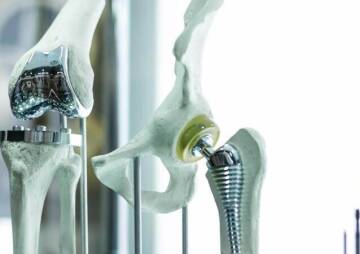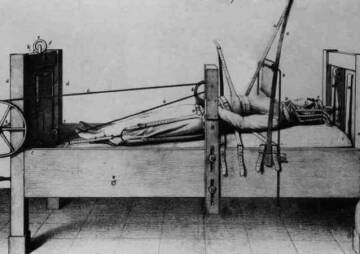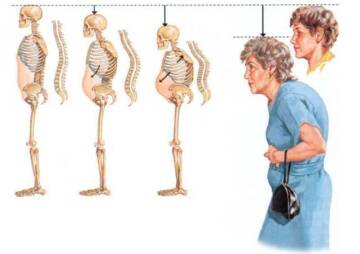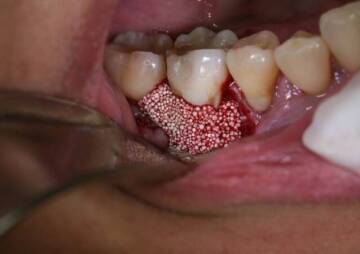-
Category
Craniomaxillofacial Surgery
Orthopedic Surgery
Spine Surgery
Orthopedic Implants
Hip Surgery
Knee Surgery
Pectus Excavatum
Bone Graft
Disinfectants
Healthcare
Learn More About The Various Types Of Joint Replacement

Today, advanced medical science enables surgeons to perform different types of joint replacement. So follow us to find them out.
The skeletal structure of the human body consists of different types of bones and joints. So, thanks to this structure, you can move your bones in specific directions. The joint is one of the most vulnerable and sensitive physical structures in the body that has been exposed to different damaging factors over the years. Joint stiffness and pain can occur when the joints' cartilage is damaged due to bone diseases such as osteoarthritis or causes such as aging, trauma, and fluid loss. Joint replacement surgery is done when a joint is fully or partially worn and no non-surgical procedure, such as physiotherapy, decreases pain severity. Today, advanced medical science enables surgeons to perform different types of joint replacement. What do you know about them? Or are you planning for specific types of joint replacement? You will become more aware of various kinds of joint replacements in the following.
What Is A Joint Replacement, And What Are The Reasons Why You Need It?
In general, joint replacement surgery or arthroplasty refers to a surgical method in which a damaged joint is replaced with an artificial joint. Surgeons usually perform this surgery in two different ways, total joint replacement and partial joint replacement. Total joint replacement is the best choice for patients whose joints are fully damaged, but partial joint replacement is appropriate for those whose joints are only partially damaged. The minimally invasive method is one of the most sought-after joint replacement types, which is performed with small incisions.
But, what are the causes of joint damage? The leading causes of joint damage and the need for joint replacement are rheumatological conditions such as osteoarthritis or rheumatoid arthritis. Over time, these conditions can cause the joints to wear out and become painful. Doctors also cite trauma such as bad falls or car accidents as causes of joint damage. Furthermore, even though you do not have any special conditions, general wear and tear will cause bone and joint damage as you age. You may ask, do all the joint injuries require arthroplasty?
In answer to this question, doctors state that not all joint and bone injuries need replacement and that treatment is dependent on the type and severity of the injury and pain. To diagnose the severity of the injury, the doctor will first examine your painful joint using an X-ray or arthroscopy method. After diagnosis, doctors usually prescribe specific exercises, physiotherapy, medication, or corticosteroid injections to relieve pain in the worn joint. If none of these treatments relieve the pain, joint replacement is the last and most sensible option. Joint replacement significantly reduces pain and improves patients' quality of life. However, keep in mind that an artificial joint or prosthesis will not be a healthy joint, and you will have limitations even after surgery. Also, One of the most important things to consider when undergoing surgery is post-operative complications.
Types Of Joint Replacement

The first thing that comes to mind when discussing joint replacement and arthroplasty is probably knee or hip replacement. Do you why? Because the knee or hip joints are among the joints that are most frequently replaced by a prosthesis and are the most vulnerable to damage. According to statistics, more than 600,000 knee replacements and more than 300,000 hip replacements are performed annually in the United States, and these statistics show the prevalence of these joint replacements. There are several types of joint replacements listed below:
Knee Replacement
As we mentioned in the "Knee replacement surgery" article, the knee joint is highly significant to the body because it not only allows you to walk, run, sit, and so on, but it also carries the weight of the body. As a result, it is more prone to damage, so many people complain of knee pain as they get older. Knee replacement is the most common treatment option that surgeons perform in total or partial forms, depending on the knee damage degree.
Hip Replacement
Another popular and common type of prosthesis is hip replacement. The most common cause of hip joint damage and pain is arthritis. The smooth articular cartilage in the hips wears away, becoming frayed and rough as osteoarthritis progresses. This causes severe pain in the hip joint that limits daily activities such as walking or bending, which persists even at rest. Because of the severity and excruciating pain, doctors must perform hip replacement surgery to improve patients' quality of life.
Elbow Replacement
The elbow is a hinge joint consisting of three bones: Humerus, Radius, and Ulna. Patients suffer from elbow pain when factors such as instability, severe fractures, post-traumatic Arthritis, and osteoarthritis cause elbow joint damage. Elbow replacement surgery is less common than knee or hip replacement surgery, but it is performed when the patient's condition is critical.
Shoulder Replacement
The shoulder consists of three bones; humerus, scapula, clavicle. It is a ball -and- socket joint that, like other joints, can be damaged by arthritis, general wear and tear, and trauma. Statistics show that around 35,000 patients in the U.S each year undergo shoulder replacement surgery. There are three types of shoulder replacement surgery; Deltopectoral methods to save the deltoid, Reverse Total Shoulder Replacement for severe pain, and Transdeltoid approach in the glenoid.
Finger Replacement
Finger joint replacement is the rarest type of replacement to reduce pain and restore finger joint stability and mobility. The operation process is easy, and the artificial joint is simple, so you will have a shorter recovery time than other surgery types.
Wrist Joint Replacement
The wrist joint is much more complex than the knee or hip joint but less vulnerable than the hip or knee joint. Severe osteoarthritis sometimes causes wear and tear on the wrist joint and disrupts all of a person's daily activities. In these circumstances, the damaged parts of the joint are removed and replaced with a prosthesis during wrist replacement surgery.
Total Ankle Arthroplasty
There are more than 100 types of arthritis, the most severe of which affect the ankle joint. The ankle joint comprises three bones, and the foot is made up of 28 bones. A total of 30 joints allow us to make a variety of movements. Damage to these joints can cause serious problems for patients, which doctors usually prefer to treat with non-surgical methods. But if these treatments do not reduce the pain, ankle replacement is the best option for the person to resume their daily activities.
These are various types of joint replacements that are done in multiple ways depending on the patients' needs and the level of pain they experience. What do you think is the most complicated joint replacement? Contrary to popular opinion, shoulder replacement is more complicated and difficult than hip or knee replacement, and the recovery period is often more challenging.
Types of Joint Replacement Surgical Methods

As mentioned earlier, joint replacement is conducted using specialized surgical techniques, some of which are listed below:
Osteotomy
This is an operation in which a bone is broken and removed, or new pieces are added near the damaged joint. This procedure is used to correct hip dysplasia and misalignment in the damaged hip joint. Osteotomy is commonly used to treat the early stages of osteoarthritis and pain caused by it.
Arthroscopy
This surgical procedure allows a doctor to examine the inside of a damaged joint to diagnose or treat the condition. In this surgery, the surgeon can use a camera attached to the arthroscopy instrument to repair the damaged cartilage or remove the joint's broken parts. However, this method is only suitable for minor damage, so it cannot be used if the joint is completely damaged.
Synovectomy
Severe and inflammatory arthritis has a significant effect on the synovial fluid and damages the surrounding joints. Synovectomy is the surgical treatment of removal of the synovial membrane that is inflamed due to arthritis. Surgeons use this technique to treat damaged joints of the fingers, wrists, elbows, shoulders, knees, and ankles.
Joint Resurfacing
The artificial joint is only inserted in a part of the damaged joint in this surgery. For example, in the knee, the prosthesis is only inserted in one of the three parts of the knee. In other words, it is also called partial knee replacement, and most patients prefer to undergo this surgery. However, this is not suitable for all damaged joints, and doctors prefer this method in cases where only a small part of the knee, elbow, and shoulder joint is attached.
The procedures described above are among the most well-known and standard methods of joint replacement surgeries. These surgeries follow the latest techniques, and doctors today try to use them more. Because the operation procedure is easy and the patient will experience less pain and a more effortless and shorter recovery period.
And the Last Word
Today, with the help of advanced medical technologies, patients no longer have to endure orthopedic pain. There are several treatments available to help patients get rid of stiff and painful joints. Certain medications, strengthening exercises, and physiotherapy can reduce joint pain from arthritis, but sometimes these methods are not enough. This is where joint replacement surgery makes life enjoyable for patients, and they can resume normal activities with a bit of restraint. Are you a candidate for joint replacement surgery? If you have any questions or concerns about this, write to us so that our users and we can guide you to have a stress-free surgery.






